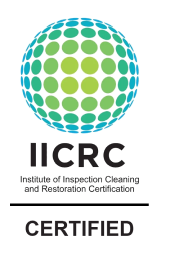
With the winter season fast approaching, the entire nation has to prepare the home for harsh, colder temperatures. Freezing or near freezing temperatures can lead to an array of household issues, most of which are easily avoidable with the appropriate preventative measures.
Protect the Pipes
Household plumbing can be particularly vulnerable to colder temperatures. Whether the pipes are metal or plastic, frozen water expands and creates pressure within the pipe, often causing cracks and breaks. Depending on the size of the break, you may not notice these damages until the ice thaws, and water can flow freely again. An unknown leak can cause tremendous damage to a home. Prevention is key. Most pipes that are in properly insulated homes are not at terrible risk of freezing. It’s important to assess the location of the pipes in the home for vulnerabilities such as pipes that run through uninsulated areas of the house. The first line of defense is to keep the home at an appropriate temperature, even when not home. This temperature control keeps the interior pipes warm enough to prevent freezing. Particularly vulnerable pipes can be insulated with wraps or foam insulation sleeves. When the temperature gets super low, it’s also not a bad idea to keep faucets dripping to allow a continuous movement of the water within the pipe.
Check the Fireplace
There’s nothing like sipping hot chocolate in front of a roaring fire on a cold winter day. That is unless you forgot to prepare your fireplace for the winter. It’s important always thoroughly to clean your fireplace before using it each year. The last thing anyone wants is for a fireplace to cause a fire or produce unwanted smoke and soot within a home. Always make sure the flue is open and that the chimney is clear of any type of debris to avoid this type of damage.
Clean Your Gutters and Downspouts
At the end of fall, just before the big freezes hit, it’s a good idea to clean your gutters and downspouts one last time. Debris-filled gutters do not allow for water to flow freely, which can result in icicles and ice dams once the temperatures freeze. Ice dams can be a particularly significant issue because they cause damage both inside and outside of the home. The weight of the dams and icicles themselves can damage roof and gutters. Ice dams block the edge of the roof and prevents melting snow from draining off the roof. The backed-up water can then leak into the home which causes both water and mold damage in the interior of the home. In addition to keeping the gutters and downspouts clean, removing snow from the roof is one of the fastest ways to prevent the formation of ice dams.
Some say winter is the most wonderful time of the year, and it certainly can be if you know how to prepare for the cold weather ahead properly. Knowing the issues you might face due to freezing temperatures and taking preventative measures to avoid damage to the home will make it so you can enjoy the cold weather in comfort.
Subscribe to Innovative Restorations's Blog






Comments